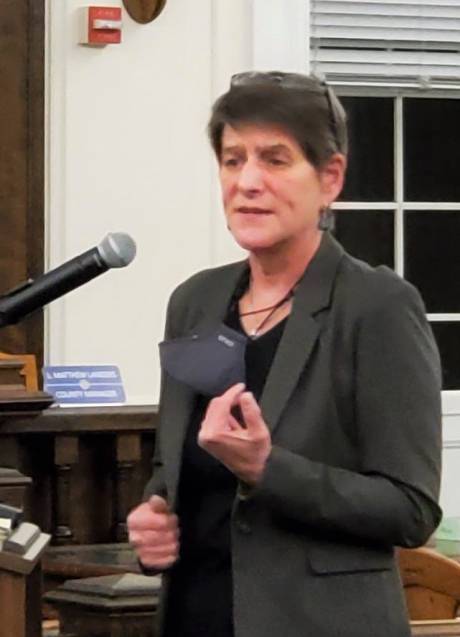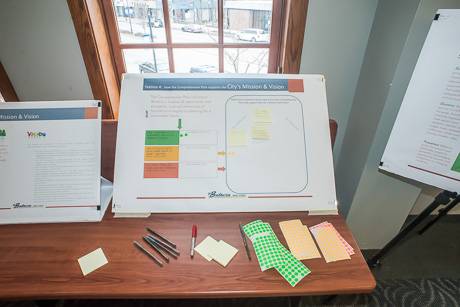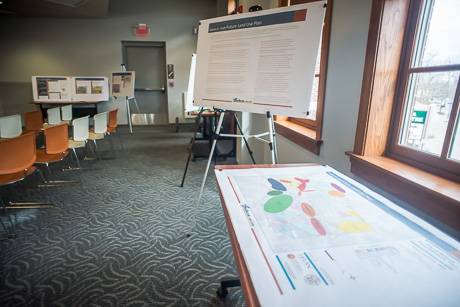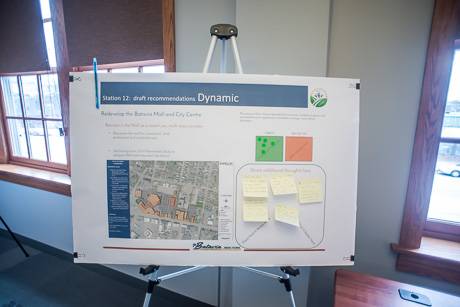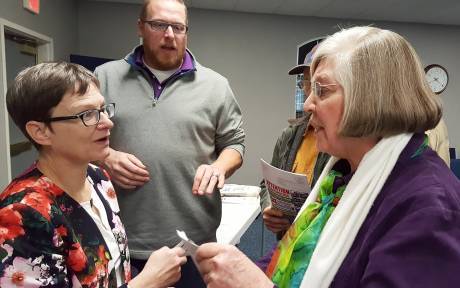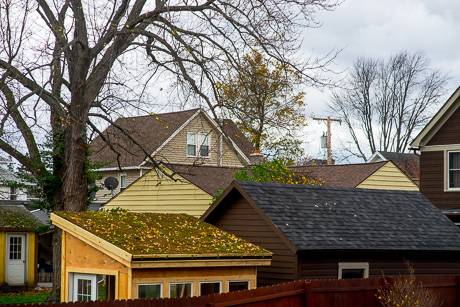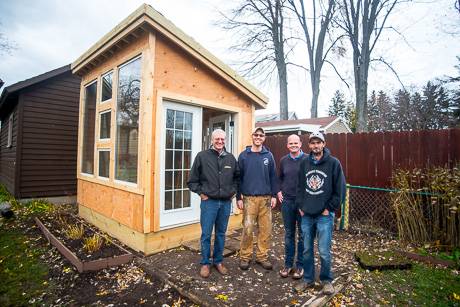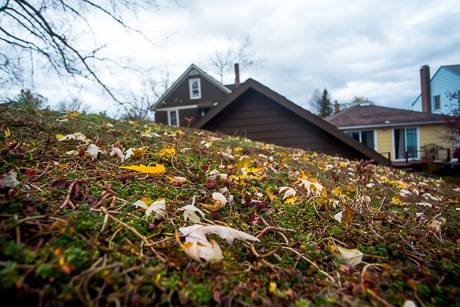City has hurdles to overcome but on solid ground with accomplishments so far
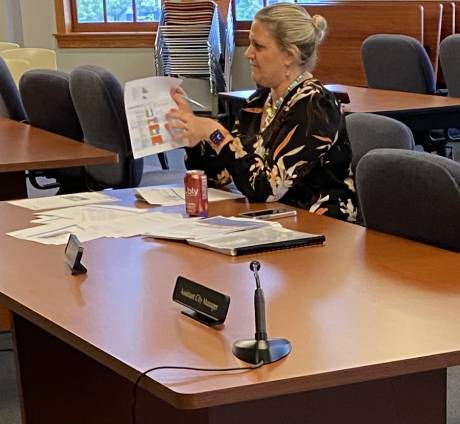
Post-Covid conditions, higher wages, a smaller pool of candidates and veteran worker retirements makes being an employer all the more difficult, Rachael Tabelski says.
“It's just something for investors, government officials and the business community alike to be aware of. We're seeing inflation, you see interest rates rising, we're seeing rising wages and across all sectors, making it very difficult to be in the business of government, where you're hampered by union negotiations and contracts and set wages,” she said during Monday’s City Planning Board meeting. “We're seeing competition for jobs that's different than we've ever seen before. There are so many issues facing employers today. We’re living through a time like no other.”
Her point was not to dole out a big bowl of doom for the city, but to lay out the issues that have become more prevalent. Tabelski’s presentation was an update of the city’s comprehensive plan from its last draft in 2017.
COVID aftermath …
Easing up COVID mandates has also meant the end of child tax credits, remote jobs and direct stimulus checks and resuming rent and utility payments for tenants, evictions and foreclosures, she said. The city has also experienced what she dubbed “the silver tsunami,” a term to describe the retirement of three experienced members of the Public Works Department, and their replacements “trying to get up to speed.”
“And you know, my question that none of us can find the answer to is, will this change the workplace permanently? We just don't know,” she said. “I wanted to just remind everyone on the framework of what we're dealing with in the city.”
Leading the way on lead replacement …
One “enormous” task — that’s an understatement — will be replacing lead water pipes, she said.
“This is an emerging issue that's going to take a lot of time away from our staff, and including myself, to work on a communication plan with the residents and try to (help them) understand,” she said. “So you have the water main, and then you have a lateral that goes through a curve box; this is all city-owned. Then you have the line that goes into your residence, that's all residential owned. So if there's a lead or galvanized pipe in any portion of that system, it now needs to be replaced.”
No, this isn’t happening tomorrow, she said but must be done at some point. Communication with affected residents, obtaining grant monies, understanding the full scope of the project, figuring out financing and viable funding sources all need to be done before pipe replacement can occur. The city of Buffalo has committed in the neighborhood of $15 million for its replacement project, she said.
“This is something that is going to be an enormous project for the city to undertake … it's something we're working on. And we are going to be starting with (former City Manager) Jason's plans. So again, this wasn't something we knew about in 2017. It wasn't on our radar. But I think it's very important that it's on the radar now,” she said.
And the upside …
All of that being said, she also pointed to the positives of city projects, total investments and being able to track those investments as part of a “$100 million I’m all in” initiative that began with former City Manager Jason Molino. In 2017, the city committed to creating at least $100 million of investment by 2022 to revitalize downtown and “reclaim the vibrancy of Batavia.”
“And the goal of this was to try to extract the investment from not only the commercial and residential building projects that went on in the city, but also any public infrastructure monies that were spent in the city,” she said. “We have $132 million invested, and that includes the completed investments and those currently under construction added together. So I think the city has done a wonderful job of fostering this investment and also tracking it. I don't know that any other city has a similar tracking system as we do.”
The most significant contributing properties to the city’s tax base are all downtown, she said, which demonstrates the importance of focusing on that segment of the city. Of the entire city base with 5,700 properties, 75 percent of those are taxable, with 25 percent being tax-exempt nonprofit and government sites. Current taxable value is at $669 million, with $220 million tax-exempt. She reminded the board that those tax-exempt properties “still pay water and sewer costs.”
The city lags behind the town of Batavia with a growth in assessed value at 26 percent to 49 percent, respectively. Completed projects from the 2017 comprehensive plans include Ellicott Trail, a downtown revitalization initiative, the commencement of the Ellicott Station project, securing infrastructures grants, building Liberty Square apartment complex, and focusing on upper floor apartments.
“We secured a lot of infrastructure grants over the last few years. Liberty Square was built so that addresses housing for all different types of populations. Our upper floor apartments have been built, a lot of the building fund projects that were part of the DRI and through another subsequent Main Street Grant,” she said.
Projects that are in-progress and not yet completed include tree management — ensuring to replace trees that are removed from the city landscape with trees of varying species and are appropriate for the local climate; creating an inclusive venue at Austin Park so that “all children” can play there; integrate “traffic calming techniques” for busy roadways such as Route 63/Ellicott Street; lead pipeline replacement; and reimagining properties within the flood plain, she said. Yet to be tapped are plans to design decorative crosswalks, pedestrian scale lighting, create a park and recreation master plan and update zoning to reflect comprehensive plan recommendations.
“I think tonight was nice to give an update to the planning committee who worked on the comprehensive plan,” Tabelski said after the meeting. “And just showing how much progress has been made in the last five or six years here in our city. But yet, there's a lot more things that still need to be done. And this group really has been through many of the planning initiatives and are here to help with the execution as well.”
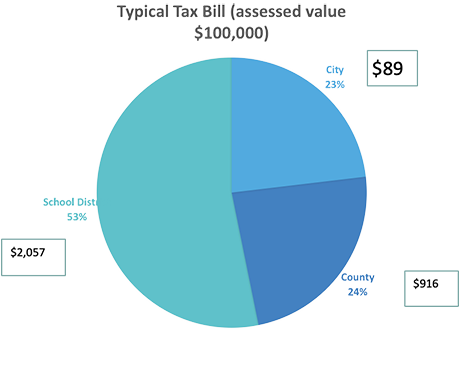
Top photo: City Manager Rachael Tabelski presents an update on the comprehensive plan during Monday's Planning Board meeting. Photo by Joanne Beck. Above illustrates the varying percentages that city residents are taxed, from 23 percent for city property taxes to 53 percent for school taxes. Image provided by the City of Batavia.

